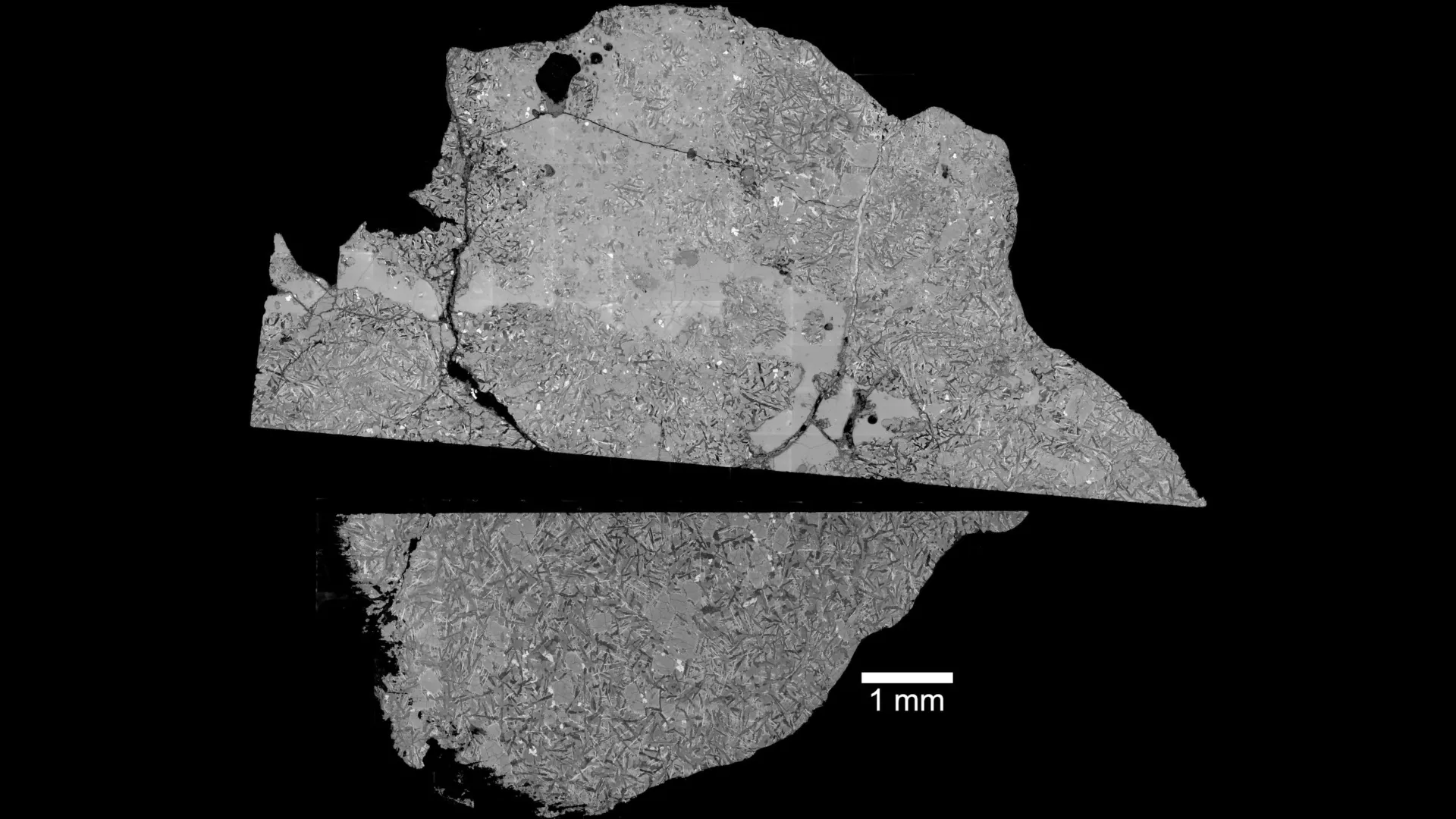A meteorite discovered in Africa in 2023 has the potential to reshape our understanding of the Moon’s volcanic history. The Northwest Africa 16286 meteorite, estimated to be around 2.35 billion years old, provides significant insights into the evolution of the Moon’s interior and its volcanic activity. The findings were presented by researchers at the Goldschmidt Conference in Prague.
Research conducted by scientists from the University of Manchester, UK, indicates that the Moon maintained internal heat-generating processes that fueled its volcanic activity across multiple phases. The lead isotope analysis of the meteorite confirms its formation during a period from which few lunar samples are available, making it the youngest basaltic lunar meteorite found on Earth to date.
This meteorite stands out due to its rare geochemical profile, which suggests it likely originated from a lava flow that solidified after emerging from the Moon’s depths. Dr. Joshua Snape, a Research Fellow involved in the study, noted the unique opportunity provided by lunar meteorites. He stated, “Lunar rocks from sample return missions are fantastic in the insights they provide us, but they are limited to the immediate areas surrounding those mission landing sites.”
The 311-gram meteorite is classified as olivine-phyric basalt, containing relatively large crystals of the mineral olivine. Its moderate titanium levels and high potassium content further distinguish it from previous lunar samples collected during missions.
Significant Geological Insights
One of the most intriguing aspects of this discovery is its age, which fills a nearly one billion-year gap in our knowledge of lunar volcanic activity. Dr. Snape highlighted that the sample is younger than basalts collected by the Apollo, Luna, and Chang’e 6 missions but older than the rocks brought back by China’s Chang’e 5 mission. This indicates that volcanic activity on the Moon persisted throughout this extensive timespan.
Analyses suggest that the Moon experienced ongoing heat generation, potentially from radiogenic elements decaying and producing heat over long periods. Dr. Snape remarked, “Moon rocks are rare, so it’s always interesting when we get something that stands out and looks different to everything else. This particular rock provides new constraints about when and how volcanic activity occurred on the Moon.”
The meteorite’s distinct composition includes melted glassy pockets and veins, indicating it was likely subjected to shock from an asteroid or meteorite impact on the Moon’s surface before being ejected into space and eventually falling to Earth. Although this shock complicates the dating process, researchers estimate the rock’s age with a margin of plus or minus 80 million years.
Future Research Directions
The research was supported by funding from the Royal Society, and the team plans to publish their findings in a peer-reviewed journal later this year. The unique characteristics of the Northwest Africa 16286 meteorite not only enhance our understanding of lunar geology but also guide future exploration efforts. By pinpointing its origin on the Moon’s surface, scientists hope to inform the landing sites for upcoming sample return missions, offering further opportunities to unlock the mysteries of our celestial neighbor.
As research on this ancient lunar rock continues, it promises to illuminate further details about the Moon’s geological past and the processes that shaped it over billions of years.








































































